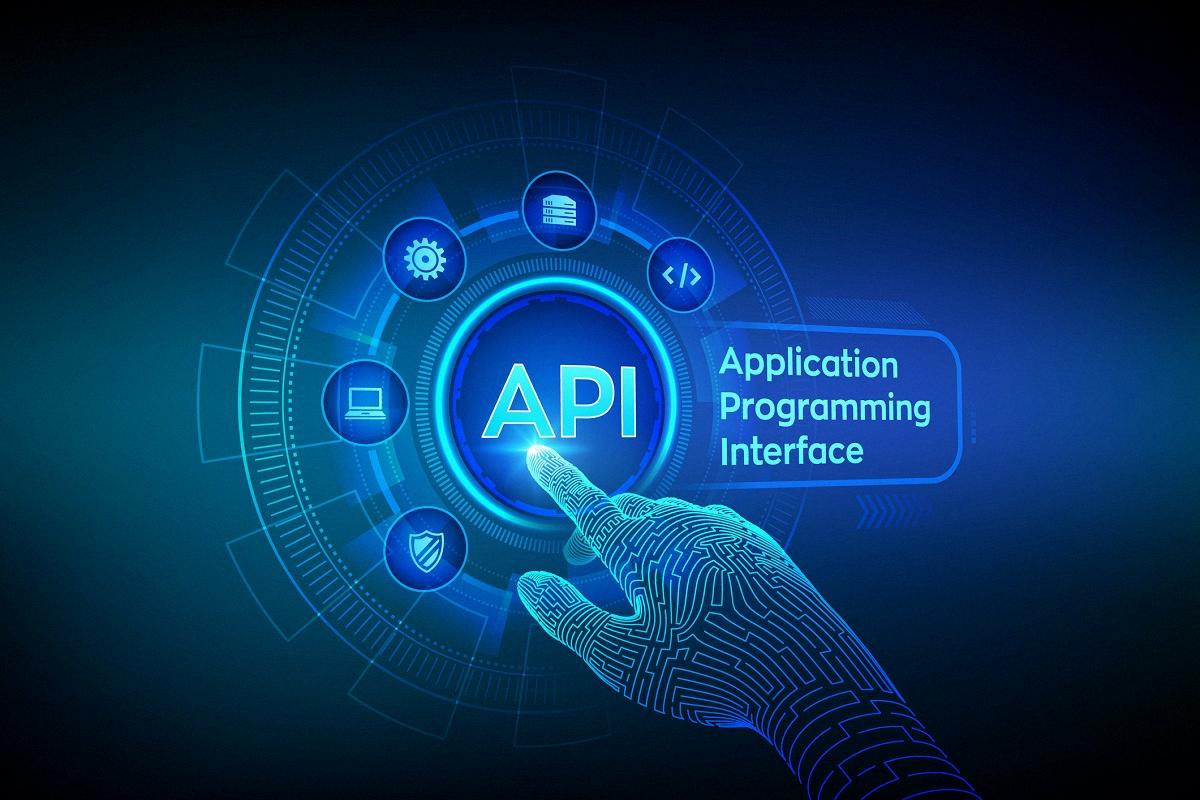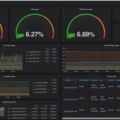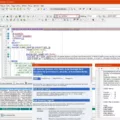Are you looking for a way to ensure that your APIs are performing optimally? If so, then API monitoring tools are the perfect solution for you. API monitoring is the practice of tracking and assessing the performance, availability, and correctness of your APIs in production. With the help of these tools, you can gain invaluable insights into how your APIs are performing and make sure that they meet the highest possible standards.
There are two primary methods for API monitoring: synthetic monitoring and real user monitoring (RUM). Synthetic monitoring is an application performance monitoring practice that emulates different user paths when engaging with an application. This method allows developers to simulate potential user interactions with their APIs to identify potential issues before they occur in production. On the other hand, RUM provides real-time feedback on how users actually interact with APIs in production.
Sematext’s powerful API monitoring tool is designed to track key API metrics and help improve both the performance and availability of your APIs. With this tool, you can monitor usage patterns as well as overall performance across different components such as servers, databases, etc., in order to detect any potential issues quickly. Additionally, it also helps you optimize data consumption by providing detailed insights into how users interact with your APIs.
To make it easier for developers to track usage patterns, Sematext’s API monitoring tool utilizes a special X-Powered-By HTTP header which includes both a unique ID generated for each subscription and a unique ID generated for each user. Once enabled, this header is returned for each request made by a user so developers can easily track usage trends over time.
As an added bonus, Sematext’s API monitoring tool also provides powerful alerts which allow you to quickly identify any potential issues or changes in performance before it becomes too late. With these alerts, you can immediately take action if something goes wrong so that you can maintain the optimal performance of your APIs at all times.
Overall, Sematext’s powerful API monitoring tool offers a comprehensive solution for ensuring the optimal performance of your APIs at all times. With its real-time feedback feature and powerful alerts system, developers can quickly identify any potential issues or changes in performance before it becomes too late – allowing them to maintain optimal levels of performance across their applications at all times.

The Benefits of Using an API Monitoring Tool
An API monitoring tool is a software application or service that continuously monitors an API’s performance, availability, and correctness. It allows organizations to identify any potential issues with the API before their customers encounter them, ensuring that the customer experience remains optimal. An API monitoring tool can track and report on various metrics, including latency, response time, error rates, throughput, etc. It can also detect changes in the functionality of the API over time and alert the team when changes occur. By keeping track of these metrics and changes in real-time, organizations can quickly address any issues with their APIs or take proactive measures to prevent future issues.
Monitoring API Performance
Synthetic monitoring is a great way to monitor APIs. This application performance monitoring practice involves simulating user interactions with web or mobile applications, such as logging in, making calls, and other actions. Synthetic monitoring is useful for detecting any performance issues such as slow loading times or errors that may occur.
Real user monitoring (RUM) is another way to monitor APIs. With RUM, performance data is collected from users who are actually using the application in real time. This allows developers to get an accurate picture of the user experience and identify any potential issues that may be affecting the performance of the API.
For both synthetic and real user monitoring, it’s important to have clear data points and metrics that can be tracked over time. For example, response time, error rates, latency, throughput, etc., should be monitored as they can provide insight into how well the API is performing and allow for quick identification of any potential issues that arise. Additionally, setting up automated alerts based on certain thresholds can help ensure that any issues are addressed quickly when they occur.
Monitoring and Logging APIs
Sematext API monitoring tool is an excellent choice for monitoring and logging your APIs. The tool provides in-depth analytics on API performance such as response time, latency, error rate, and availability. It also enables you to view real-time API logs to analyze usage patterns and identify any issues or potential problems. Additionally, Sematext’s alerting system allows you to receive notifications when thresholds are exceeded or specific events occur. With these features, you can ensure that your APIs are performing optimally and that any issues are addressed quickly and efficiently.
Types of API Monitoring
Basic API monitoring is a simple, straightforward process that can be used to track uptime and performance. It involves setting up an API call on an interval, such as once per minute, and then evaluating the response for errors or latency. If an error or latency is detected, basic API monitoring will alert you so that you can take action quickly.
Multi-step API monitoring is a more comprehensive form of API monitoring that involves multiple requests and responses in order to evaluate performance and uptime. This type of monitoring allows you to track the performance of your application across a variety of different scenarios or actions. You can monitor the time it takes for a request to complete, ensure that each request returns a successful response, and even simulate user interactions with your application in order to check for any issues with usability. Multi-step API monitoring also allows you to set thresholds for each step in the process so that you are notified when performance begins to degrade.
Most Popular Tool for API Testing
Testim is the most commonly used tool for API testing. It offers a powerful, easy-to-use platform to create and execute automated tests for your API. Testim provides an intuitive user interface that allows you to quickly create, run, and analyze tests. It also offers built-in integration with popular tools such as Postman, JMeter, and AWS Lambda. Additionally, Testim offers real-time feedback on test results and performance metrics, making it easy to identify problems in your API before they become major issues. With its comprehensive set of features and capabilities, Testim makes it easier than ever to ensure that your API is running smoothly and efficiently.
Testing APIs: Best Practices
The best way to test an API is to first understand the requirements of the application you are testing. It is important to have a well-defined test strategy that outlines how each API endpoint should be tested and what data should be used for each test. This strategy should include both functional and non-functional tests. Additionally, it is important to use appropriate verification methods such as parameter validation, error handling, response codes, assertions, and security testing. Automation tools can be used to quickly test multiple endpoints with different data sets which can help save time and improve accuracy. Finally, it’s important to make sure that all tests are properly documented so that they can be maintained over time.
Checking Data Using an API
To check data on an API, you will need to make an HTTP request to the API’s URL. Depending on the type of API, this can be done using a variety of methods, such as using a web browser or using a programming language like JavaScript or Python. Once you have made the request, you should receive a response that contains the data in either JSON or XML format. You can then use tools like Postman to view the data and check that it is correct. Additionally, if you are familiar with the API’s syntax and conventions, you may be able to interpret the data more easily.
Monitoring API Logs
Monitoring API logs is a vital step in ensuring the smooth functioning of your application. To monitor your API logs, you need to first fetch the list of available logs. This can be done by making an API call to your log service provider or logging system. Once you have the list of logs, you can start a log analysis job. This job will scan through the logs and analyze all relevant data points. After initiating the job, you can track its progress and check its status at any time.
Once the job is complete, you can access the content of the log and get full content, filtered content, or top values depending on what kind of analysis you need to do. And finally, when you no longer need to analyze a given set of logs, you can delete the corresponding analysis job to free up resources for other jobs.

Source: blog.axway.com
Monitoring API Health
Monitoring API health is an essential part of any application lifecycle. To ensure that your APIs are running smoothly, it’s important to check their health on a regular basis. Here are some best practices for monitoring API health:
1. Automate API Health Checks: Automating health checks is the best way to ensure your APIs are running without any issues. Depending on the type of application, you can set up a script to run the checks at specific intervals or use an automation tool like Jenkins or Selenium to perform checks on a schedule.
2. Check API Health as Frequently as Possible: You should check the health of your APIs at least once a day, but more frequent checks may be necessary depending on how frequently your application is used and how critical it is for success. This will allow you to identify any potential issues quickly and take corrective action before they become major problems.
3. Disable Cache: When monitoring API health, it’s important to make sure that cache isn’t enabled, as this could lead to inaccurate results if data has been cached from previous requests.
4. Response Time Matters: A slow response time can indicate problems with an API and should be monitored regularly in order to ensure that performance isn’t being impacted by the underlying infrastructure or code itself.
5. JSON Response: The format of the response should also be checked on a regular basis in order to ensure that all data is returned correctly and in the expected format (JSON).
6. Response Status Code: The response status code should match what was expected in order for an API call to be considered successful or failed – this should also be monitored regularly as part of an overall health check process.
7. Consider Protecting Your Health Check Endpoint: It’s recommended that you protect your health check endpoint with authentication so only users with the appropriate credentials can access it – this will help prevent malicious attacks from compromising system security or integrity.
Conclusion
In conclusion, API monitoring tools are essential for any organization looking to ensure the performance, functionality, and availability of their APIs. By using synthetic monitoring and real user monitoring (RUM), organizations can track key API metrics and pinpoint where issues arise. Additionally, API usage can be tracked with the X-Powered-By HTTP header, which includes a unique ID generated for each subscription and a unique ID generated for each user. With an API monitoring tool, organizations gain visibility into performance, availability, and functional correctness to maintain the optimal performance of their APIs.








